Recent Articles
Popular Makes
Body Types
10 Cars with the Best Four-Cylinder Engines
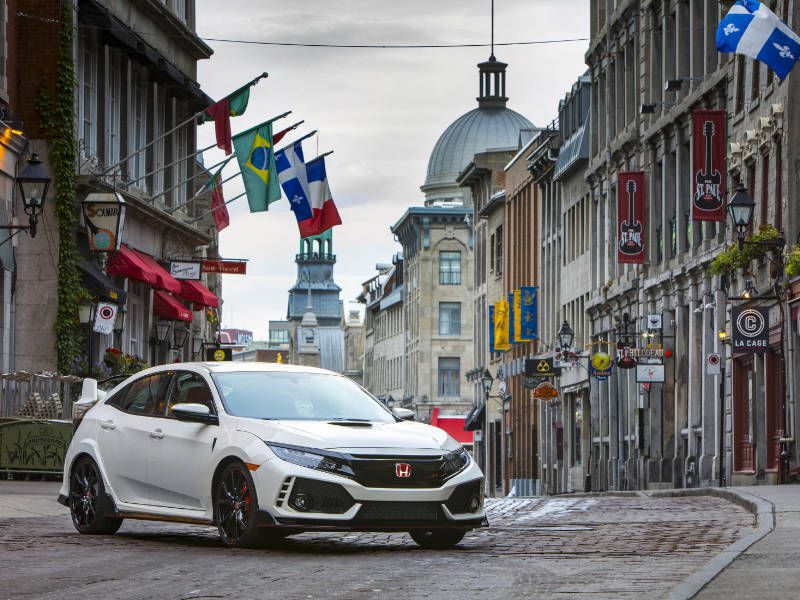
2017 Honda Civic Type R hero ・ Photo by Honda
Thanks to technology such as turbocharging and direct injection, today’s four-cylinder engines are more powerful than ever, leading to extremely quick compacts and more frugal large cars. If you have your sights on a four-cylinder vehicle but don’t quite know which one, we've compiled a list of 10 cars with the best four-cylinder engines to help set you straight.
Being best doesn’t necessarily mean making the most power — it could mean being more efficient, better to drive or even smoother. Because this is a list of just cars, we’ve had to ignore some interesting engines that are only available in motorcycles, trucks, minivans, tractors and industrial equipment. Read on to see our choices, sorted in order of cars' horsepower per liter of engine displacement.
10) 2018 BMW 328d
Despite the recent emission scandals involving some manufacturers, there are still several four-cylinder diesel engines available on the market, and the best at the moment is BMW’s 2.0-liter "TwinPower." Available in the 3 Series sedan and wagon, it generates 180 horsepower (or a little over 90 horsepower per liter) and a forceful 280 lb-ft of torque, all while delivering fuel economy of 31 miles per gallon in the city and 43 mpg on the highway. There is some diesel noise as well as a bit of vibration, but it isn’t all that noticeable. The 328d isn’t particularly speedy, but it can get up to 60 miles per hour in not much more than seven seconds and it feels quicker than it is.
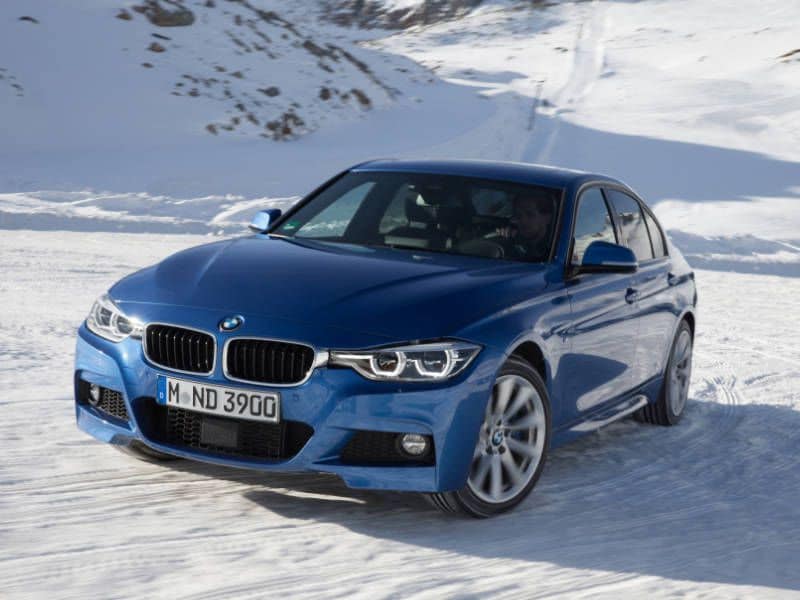
Photo by BMW
9) 2017 Subaru BRZ / 2017 Toyota 86
The Subaru BRZ and the Toyota 86 are rear-wheel drive sports cars that use an aluminum 2.0-liter boxer four-cylinder engine supplied by Subaru and an engine management system supplied by Toyota. The end result is 205 horsepower (nearly 103 horsepower per liter) and 156 lb-ft of torque, numbers that are good enough to make it the only naturally-aspirated engine on our list.
That said, these cars have an excellent chassis and could handle much more power — like, say, the 268 horsepower from the turbocharged 2.0-liter engine from Subaru's WRX (or even the 305 horsepower from the turbo 2.5 engine from the WRX STI).
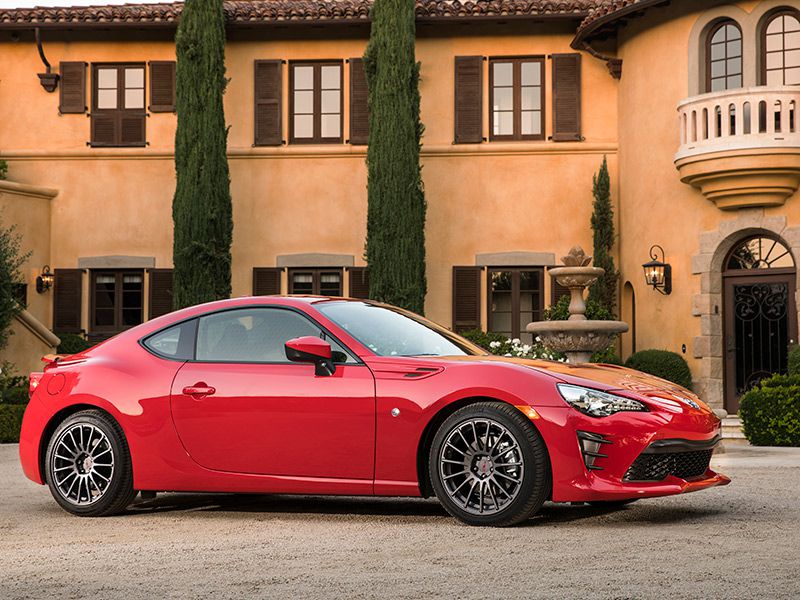
Photo by Toyota
8) 2017 Fiat 124 Spider Abarth / 2017 Fiat 500 Abarth
Fiat’s four-cylinder 1.4-liter MultiAir turbo engine is the smallest engine on our list, yet it still manages to put out an impressive 160 horsepower and 170 lb-ft of torque in the 500 Abarth with a manual transmission and a slightly better 164 horsepower and 184 lb-ft of torque in the 124 Spider Abarth (which works out to just a hair under 120 horsepower per liter). We prefer the engine when it’s in the 500 because it’s just a little more raucous in that application and seems to better suit the nature of the car; the 124 Spider is just a little too muted for our tastes, though it’s still plenty fun to drive.
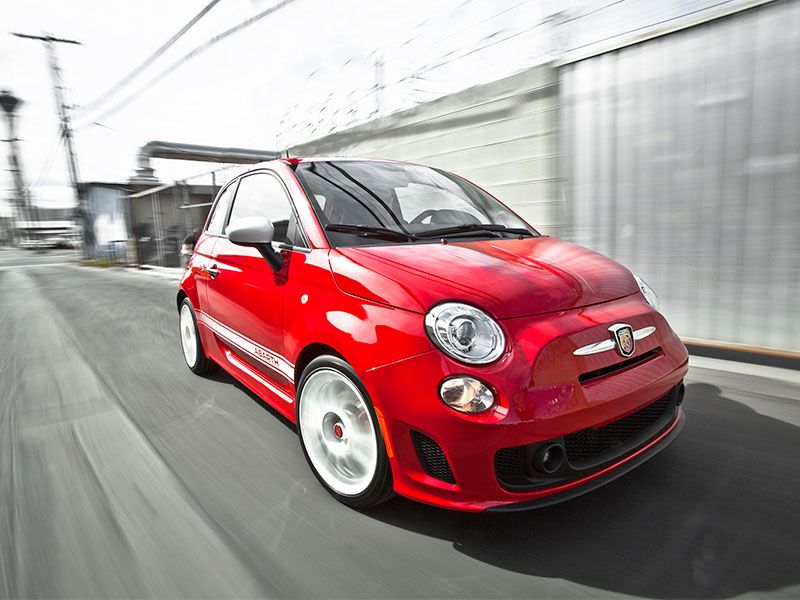
Photo by FIAT
7) 2018 Audi S3 / 2018 Audi TTS / 2017 Volkswagen Golf R
The Volkswagen Golf R, Audi S3 and Audi TTS share high-output versions of the VW’s EA888 engine. In each of these applications, the engine uses turbocharging, direct injection and an iron block to make 292 horsepower (that’s a touch over 147 horsepower per liter) and 280 lb-ft of torque. All three models use all-wheel drive to get the power to the ground, though the Golf R and TTS use six-speed DSG dual-clutch gearboxes where the S3 uses a seven-speed unit. The Golf R is our favorite of the three because it’s the least assuming of the bunch (and also the least expensive), though the Audis do have sleek good looks and slightly better interiors.
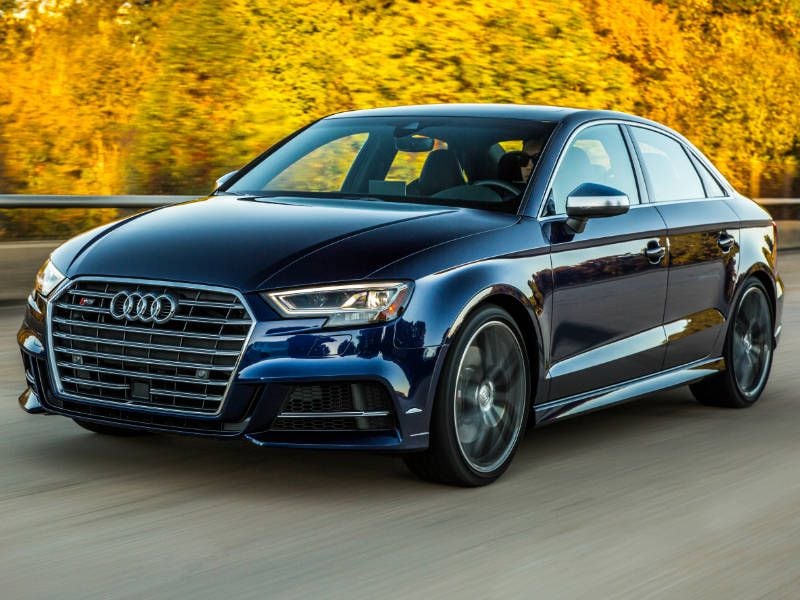
Photo by Audi
6) 2018 Jaguar XE / 2018 Jaguar XF / 2018 Jaguar F-Type
Jaguar’s XE, XF and now the F-Type (our choice of the three) are all available with a new version of the company's 2.0-liter Ingenium engine that makes 296 horsepower (or just a tad over 148 horsepower per liter) and 295 lb-ft of torque. To make that sort of power, the engine uses an aluminum block, direct injection and a twin-scroll turbo with ceramic ball bearings and a high-flow compressor wheel. The engine can only be paired with the ZF eight-speed automatic transmission, though the XE and XF can be had in either rear- or all-wheel drive, while the four-cylinder F-Type is only available with rear-wheel drive; you’ll need to step up to the supercharged V6 if you want an all-wheel drive F-Type.
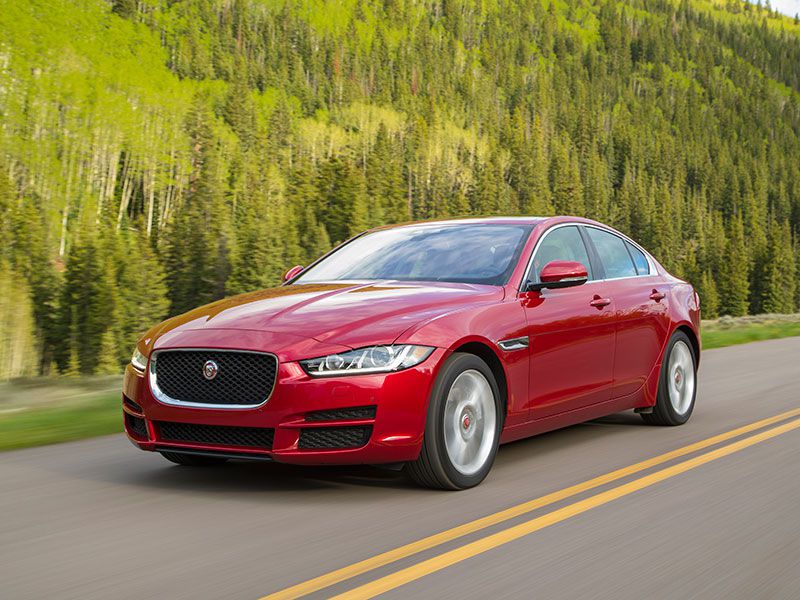
Photo by Jaguar Land Rover
5) 2017 Porsche Boxster / 2017 Porsche Cayman
Porsche has a history of using four-cylinder engines, and the newest versions of the Cayman and Boxster have returned to the company's roots. Base versions come with a 2.0-liter boxer turbocharged four-cylinder that makes 300 horsepower (or almost 151 horsepower per liter) and 280 lb-ft of torque. If you want a bit more power, the Cayman S is available with a 350-horsepower 309-lb-ft 2.5-liter four-cylinder — but that’s only a little over 140 horsepower per liter, not quite as good as the base motor. Either engine is available with either a six-speed manual or seven-speed PDK dual-clutch transmission. We prefer the Cayman coupe over the Boxster convertible because it’s lighter and just a little bit better to drive.
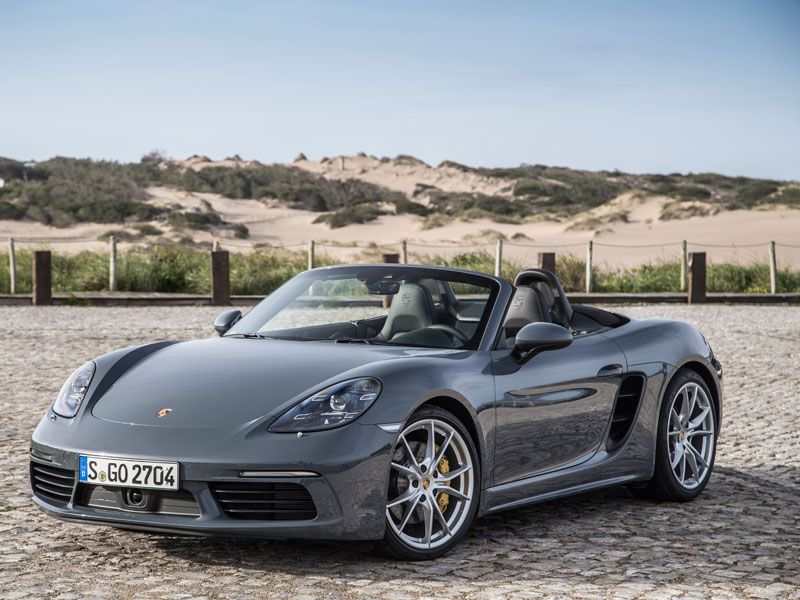
Photo by Porsche
4) 2017 Ford Focus RS
The turbocharged 2.3-liter four-cylinder engine in the Ford Focus RS makes 350 horsepower (almost 155 horsepower per liter) and 350 lb-ft of torque, the best of Ford’s "EcoBoost" turbos except for the GT supercar's 3.5-liter 647-horsepower twin-turbo monster. The only transmission available in the RS is a six-speed manual that sends power to all four wheels, but we wouldn’t have it any other way.
A similar engine can be found in the Mustang, but in that application it makes only 310 horsepower and 320 lb-ft of torque and only sends power to the rear wheels, though there is an optional automatic transmission.
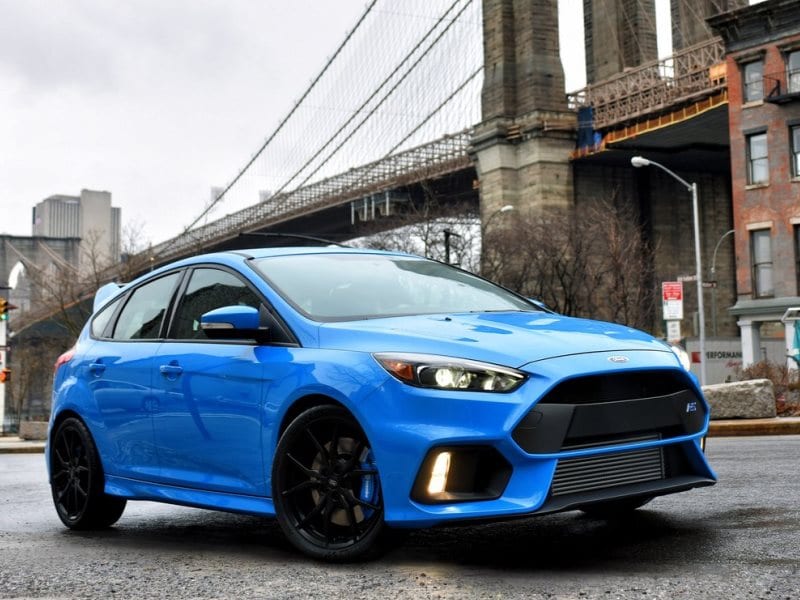
Photo by Ford
3) 2017 Honda Civic Type R
The Honda Civic Type R is one of the most powerful Hondas to ever go on sale, and with 306 horsepower (that’s over 153 horsepower per liter) and 295 lb-ft of torque from its turbocharged and direct-injected 2.0-liter four-cylinder, it even manages to outgun the original Acura NSX. The only transmission available is a six-speed manual with Rev-Match Control that sends power to the front wheels via a helical limited-slip differential. The car is a little boy-racer-ish, but with a max of 22.8 pounds of boost and a 7,000 rpm redline the engine fits the car’s exterior almost perfectly. We just wish the exhaust was a little noisier to match.

Photo by Honda
2) 2018 Volvo S60 Polestar / 2018 Volvo V60 Polestar
Volvo may have decided to sell only 2.0-liter four-cylinder engines in all its current cars, but they come in various different specifications. The one we’re interested in is the one found in the S60 Polestar sedan and V60 Polestar wagon, which makes a very healthy 362 horsepower (almost 184 horsepower per liter) and 347 lb-ft of torque. Power is sent to all four wheels via an eight-speed automatic.
In order to generate that much power from such a small engine while keeping throttle response sharp, Volvo uses direct injection along with both a supercharger (mainly for low-end torque) and a turbocharger (for top-end power). If you need a larger vehicle you can get a similar engine in other Volvo vehicles, but with less power.

Photo by Volvo
1) 2018 Mercedes-AMG CLA45
The Mercedes-Benz CLA-Class isn’t our favorite car (it’s quite attractive, but it can get expensive and is a bit dull to drive despite the power), but the engine in the Mercedes-AMG CLA45 is a different story. The 2.0-liter handcrafted AMG inline-four uses an aluminum block, direct injection and a twin-scroll turbocharger (producing over 27 pounds of boost) to generate an impressive 375 horsepower (that’s more than 188 horsepower per liter) and 350 lb-ft of torque. A seven-speed AMG Speedshift dual-clutch transmission sends power to all four wheels. If that all sounds impressive, rumor has it that the next generation will produce over 400 horsepower. We just hope they bring the "shooting brake" wagon version of the next gen to our shores.
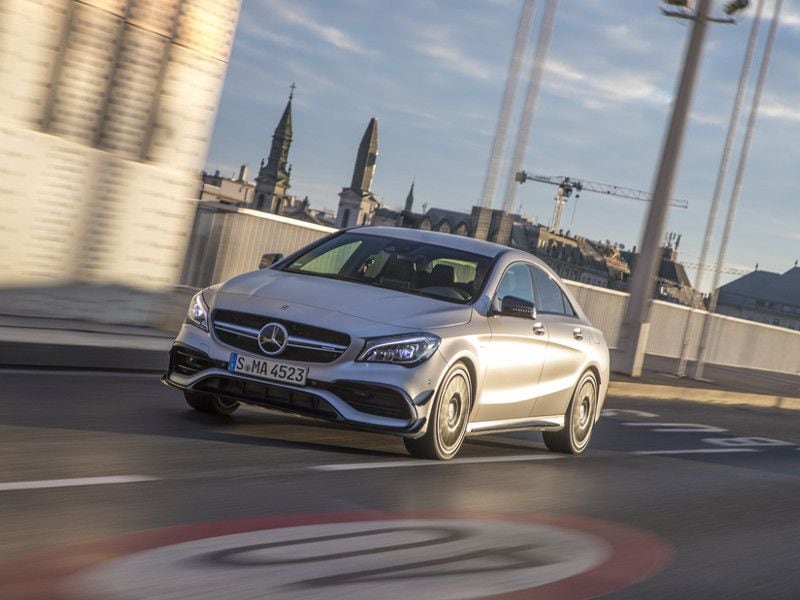
Photo by Mercedes-AMG